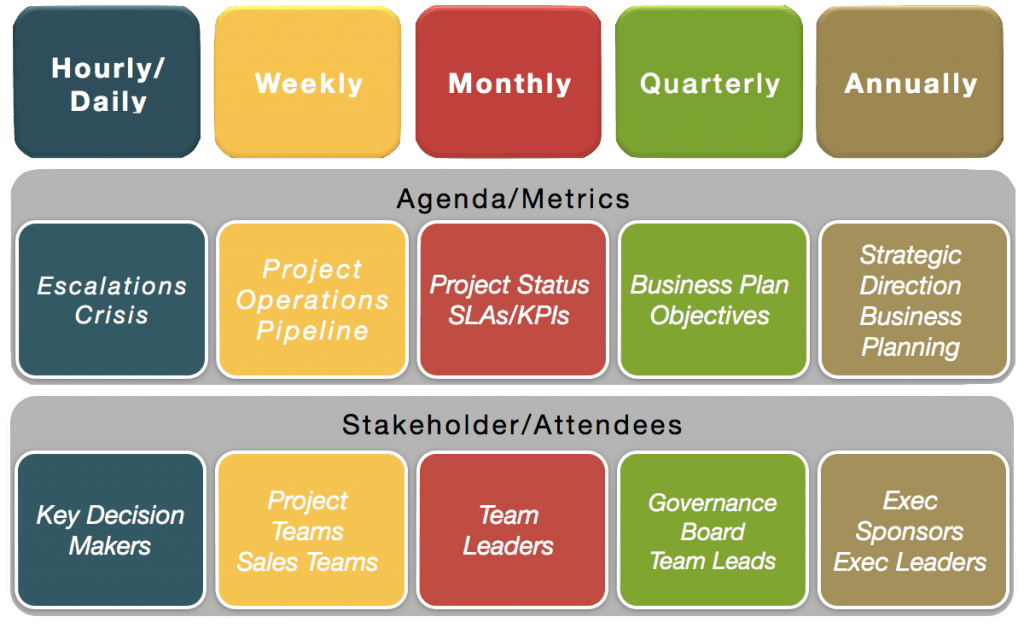Tip 7: Set a Cadence of Communication
Did you know that in any orchestra, the most important member is actually the conductor? The individual musicians making up the orchestra may know how to play their piece, but they can’t achieve the unity and harmony required in playing a symphony without the conductor’s guidance. The conductor is the one with the plan of how the symphony should sound, and so they have to direct when and how every note should be played to create the desired unity and harmony in the symphony.
Managing an alliance is like managing an orchestra. It requires a lot of attention, and the alliance manager is the conductor who needs to assure that all the team members are in tune and playing from the same music sheet. Even for an experienced alliance manager, it can be a challenging task to keep together everything the partnership needs to stay alive. One way to keep the alliance on a steady track is to set up a clear cadence of governance, or perhaps we’d better call it a cadence of communication, – a series of periodic meetings that enable you to manage the alliance activities in a systematic way.
Even in the best-managed alliances, ad-hoc alliance management is sometimes required when crises emerge unexpectedly and require immediate attention. However, in general, you want to avoid ad-hoc alliance management. Setting up a cadence of communication is helpful in averting such situations.
When setting up the cadence of communication, you map out who will meet whom and when. Included in the setup is what the topics on the agenda for the regular meetings are. It can be a matrix model as simple as the sketch shown below. This one is basically a 3×6 matrix – in the rows you set the regular agenda items and the attendees for the meetings. The leftmost column, on the other hand, contains the ad-hoc contacts, the next one the weekly contacts, then monthly, quarterly, and so on.

The model can be adjusted based on the needs of your particular alliance. You can add dates to it, be more specific about agenda items and attendees, as well as add other useful elements to the model. Of course, you can also make the layout as fancy as you like. However, do keep functionality in mind. The matrix needs to provide a clear overview that will support the management of the alliance.
In one of the alliances I managed in a large corporation, we used such a model. At first, I had a call with my partner counterpart on a weekly basis to discuss the progress of the overall alliance and its sub-projects. Later on, we moved this status meeting to a bi-weekly call. Our executive sponsors were set to meet twice a year and, hence, in the matrix we added another column to include the six-month cycle.
The cadence of communication is very easy to use. It’s a pragmatic tool to help you manage your alliances. I recommend that you set up the model early on in the process of your designing the alliance communication and to communicate it to the teams. As the alliance matures, the cadence may need to change, as is the case in the example mentioned above.
The cadence of communication keeps your alliance activities on track as well as keeps everyone involved communicating and accountable for their tasks.
I am publishing my ebook “25 tips for successful Partnerships and Alliances” in parts here on my website. Every other week a tip from the book will be shared, in the weeks in between I will publish my regular column. If you prefer to read the tips in the ebook faster rather than wait a full year then click here to purchase your own copy of the book.